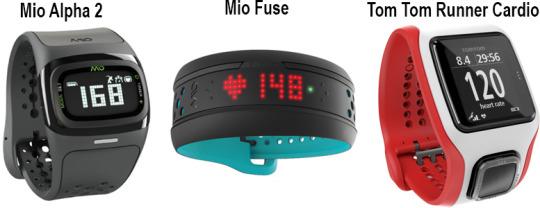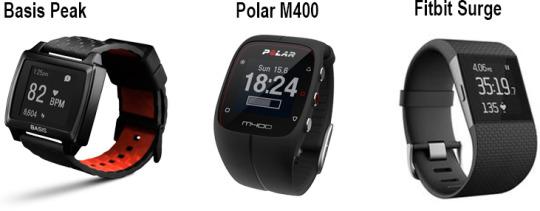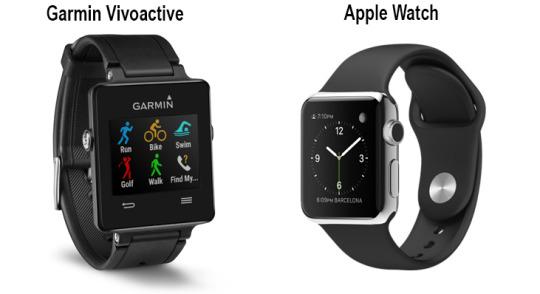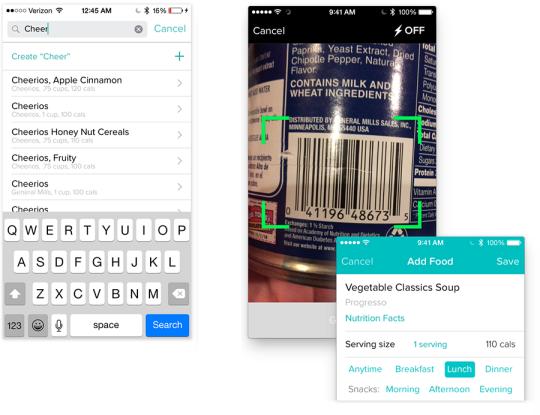22 Fitness Bands and the Battle for Your Wrist
AVAILABLE AT AMAZON
22 Fitness Bands and the Battle for Your Wrist
The industry has spoken: Your wrist is the new lap. It’s where computers are going next.
It’s a bold ambition. Your wrist is personal. Anything you put there has to be strapped on all day — and operated one-handed, for seconds at a time. There’s no room for a mouse or keyboard, let alone niceties like jacks, hard drives, or big screens.
And there aren’t tons of reasons why you’d want a computer on your wrist. Text messages, email, GPS, alarms — all of these things are better and easier to manage on your phone. There is one huge exception, though: health tracking.
Since the dawn of humanity, the goings-on inside your body have been pretty much invisible. When do you get insight into your body mechanisms? Maybe ten minutes, once a year, in a doctor’s office.
No wonder we’re an overweight nation. We know we’re supposed to eat better and move more — but how can we do that, when we can’tsee how much we’re eating and moving?
A watch or a band is pressed against your skin all day. So if that band is a wrist computer with sensors, it should be able to get some pretty decent measurements — exercise, sleep, heart rate, sun exposure, skin temperature, for starters — and make visible what’s usually invisible.
I’ve tested dozens of these wrist gadgets, but I’ve never bought one for myself. Now, I think, it’s time. But which one? The Apple Watch? A Fitbit thing?
I decided to conduct a little reality-show competition on my arm. I resolved to take the winner of this competition and buy it, with my own money, and commit to wearing it.
Welcome to the Quest for Pogue’s Wrist.

What We Want in a Wrist Gadget
I’m not especially picky. There are only a few things I really want in a wrist device:
1. Small. Lots of these things are big like watches, or even bigger; some feel like a bathroom scale strapped to your wrist. I’d rather have a band — something so slim and lightweight, you forget it’s on you.
2. Long battery life. A health monitor can’t do its job if you’re not wearing it. If you have to charge the darned thing every day, you’re taking it off a lot.
3. Good looks. Most people decide what to wear based on what itlooks like—both clothes and jewelry. You’re going to be wearing this thing on your body. Looks matter.
4. Waterproof. Taking these things off every time you shower or swim is a pain.
5. Superb app. Fitness bands communicate with your phone wirelessly, by Bluetooth. In a companion phone app, you get the full readout of your progress, in graphs and numbers. If the app’s not easy to use and nice to spend time with, you won’t use it.
6. A screen. Even though your phone is the primary health dashboard, it’s nice to have a screen on the band itself — for when you’re away from your phone, you don’t feel like hauling the phone out of your pocket, or you want to see what time it is.
7. A community. If you want to get fit, it helps a lot if your efforts are exposed to other people — friends, spouse, family. Camaraderie and friendly competition inevitably result. It’s health through humiliation.
8. Food tracking. If a fitness tracker tracks your activity but not your food intake, it’s doing only half the job. Tragically, there’s no magical, automatic way to log what you eat, so you have to do that manually after everything you wolf down. But good software can make that easy, reducing the job to a quick bar-code scan or typing a few letters.
9. Heart monitor. Until recently, you wouldn’t have called those Fitbits and Up bands medical devices. They’re not scientific instruments; they’re accurate enough only to serve as motivationaldevices.
But that’s changing fast. One big reason: the debut of real-time, continuous heart-rate monitoring.
Your heart rate is important for many reasons. First, a wristband that sees your pulse can do a far more accurate job of tracking your sleep, compared with one that sees only the motion of your arm at night. Because when you’re asleep, your heart slows down.
Second, your heart rate is an important indicator of your overall metabolism. A tracker that knows how hard your heart is pounding can do a much more accurate job of tracking the calories you’re burning.
Third, if you exercise, a real-time heart-rate display is extremely important. You want to push your heart so that it works harder — you want it in the “cardio zone,” where the heart itself is getting a workout — but nothing dangerous.
Fourth, your resting heart rate is an important indicator of your heart’s overall efficiency. In general, the lower, the better.
10. Smartwatch features. It’d be nice if the band did smartwatchy things, like showing you who’s calling or texting you. That’s the other thing smartwatches are really good for: Letting you screen incoming notifications subtly, by glancing at your wrist, rather than hauling out your phone.
11. Silent alarm. As long as you’re wearing a band on your wrist, how about letting it wake you with a vibration, so you don’t wake up your sleeping partner?
12. Automatic sleep detection. Most of these trackers can track your sleep patterns — if you bother to tell them, by pressing a button, every time you go to bed and later wake up. But come on: If they’re so smart, why can’t they detect that automatically? The best trackers log your sleep automatically, so you can forget all about it.
OK, that’s it. A dozen feature requests. Is that so much to ask?
Let the competition begin!
The $50 step-and-sleep counters
In the beginning, fitness bands contained nothing but accelerometers — that is, motion sensors. These were the Nike band, original Up and Fitbit, and so on. Their software analyzes the motion of your wrist, and from that determines how many steps you’re taking. Most also analyze your sleep: How many times did you wake up? How long did you sleep? What portions of the night were you in deep versus light sleep? (Sleep scientists will tell you that trying to figure out your brain’s stage of sleep by studying the movements of your hand is a bit of a stretch. But it’s something.)
These gadgets used to cost $150 or more; now they’re dirt-cheap. All of the following models, for example, cost only $50.
- Jawbone Up Move. A plastic disk. Clips to your clothes or pops into a wristband (sold separately for $15). Six-month disposable battery. Really great app. Showerproof, but not swimproof. Includes features 1, 2, 5, 7, 8.
- Misfit Flash. Another plastic disk. Twelve pinpoint lights illuminate to show your progress, or what time it is. Clips to your clothes or pops into a wristband. Six-month disposable battery. Waterproof. Features 1, 2, 4, 5, 7, 12.

- Nabu X. Silicone band. One-week battery life. Shake hands with another Nabu owner to wirelessly become “friends.” Lights up when your phone has a notification. Features 1, 2, 4, 5, 7, 11, 12.
- Fitbug Orb. Clips to your clothes or pops into a wristband. Six-month disposable battery. Web-based interface (in addition to phone app) for more generous graphs and the ability to log food. Features 1, 2, 8.

- Fitbit Zip. Clips to your clothes; no wristband, no sleep tracking. Six-month disposable battery. Web-based interface (in addition to phone app) for more generous graphs. Features 1, 2, 5, 6, 7.
- Pivotal Living Tracker 1. This astonishingly cheap tracker is only $12 —but that’s per year. If you don’t renew, it still counts steps, but the app stops working. Six-day battery. Features 1, 2, 6, 7, 11.

The winner: The Up Move’s infinitely more sophisticated, polished phone app includes food tracking and community rivalry features. It’s by far the best bet.
The $100 trackers
The next category of trackers offer nearly the same features as the $50 versions — except that they’re made of nicer materials and they look better. For example:
- Jawbone Up2. Great-looking silicone wristband. One-week battery. A couple of status lights. Idle alert (vibrates when you’ve been sitting motionless for too long — an extremely important feature). Smart alarm (tries to wake you at the lightest part of your sleep cycle, to avoid grogginess — even if it’s a little before your scheduled alarm time). Features 1, 2, 3, 5, 7, 8, 11.
- Misfit Shine. A great-looking metal disc — clips to your clothes or pops into a wristband. Twelve pinpoint lights illuminate to show your progress, or what time it is. Disposable battery lasts up to six months. Waterproof. Features 1, 2, 3, 4, 5, 7.

- Fitbit Flex. Sleek-looking silicone band. Five bright indicator LED lights. Week-long battery. Web-based interface (in addition to phone app) for more generous graphs. Features 1, 2, 3, 5, 7, 8, 11.

- Garmin Vivofit 2. One-year disposable battery — amazing. A screen. Inactivity alarm. Features 1, 2, 3, 5, 6, 7. (Here’s my full review.)
- Garmin Vivosmart ($150). Extremely slim, but with a screen that appears when you tap it; it shows incoming texts and calls from your phone Waterproof. Inactivity alarm. One-week battery. Features 1, 2, 3, 4, 5, 6, 7, 10, 11.

The winners: The Up Move’s phone app offers useful tips based on observations it makes about your behavior; the Fitbit Flex’s indicator lights are a lot better than no progress indicators at all; the Vivofit and Vivosmart have actual screens. All three come with terrific apps.
The fitness watches
If you’re a hardcore athlete, an actual watch (as opposed to a band) can contain a lot more sensors, and their screens can tell you a lot more about how you’re doing. Some even have built-in GPS — a killer feature if you’re a runner because you can leave your phone at home and still see where you ran (and how far).
But these watches are also usually expensive, huge, and not especially stylish. Some examples:
- Mio Alpha 2, $200. Chunky. Color-coded LEDs to show you your current cardio zone. No GPS. Three-month battery (or less if you work out often). Features 2, 5, 6, 9.
- Mio Fuse, $150. Waterproof, fat band with heart monitor. Week-long battery life. Doesn’t track sleep or stair climbing. Features 2, 4, 5, 6, 9.
- TomTom Runner Cardio, $270. Rather huge, with heart tracking and GPS. Eight-hour life using GPS. Primarily for runners. Features 2, 6, 9.

- Basis Peak, $200. Big but amazingly proficient body-tracking device, with sensors for motion, heart rate, skin temperature, and sweat. Magnetic charger. Waterproof. Four-day battery life. Touchscreen. Features 4, 5, 6, 9, 10, 11, 12.
- Polar M400, $200. Thin but gigantic. GPS. Standard micro-USB jack for charging — all other products here require a proprietary USB charging cord, which is easy to lose. Waterproof. Three-week battery (much shorter with GPS on). Features 2, 4, 5, 6, 7.
- Fitbit Surge, $250. GPS and heart-rate monitoring. Detects sleep automatically. Touchscreen. One-week battery (GPS eats it much faster.) Features 2, 3, 5, 6, 7, 8, 9, 10, 11, 12 .

- Garmin Vivoactive, $250. Amazingly slim for a GPS watch (but no built-in heart monitor). Color screen — and it’s always on, so it makes a good watch. Three-week battery (less with GPS use). Inactivity alerts. Waterproof. Features 2, 3, 4, 5, 6, 7, 11, 12.
- Apple Watch, $350 and up. Well, you know about the Apple Watch (here’s my review). Despite the cluster of sensors on the back and the polished fitness software, the Apple Watch isn’t the greatest health tracker; the one-day battery life wrecks it. You have to take it off and charge it every night, so it can’t track your sleep or wake you with a silent alarm. The heart-rate monitor samples you only once every ten minutes (except during a workout). No food tracking or community features. Features 3, 5, 6, 9, 10.

The winners: The Fitbit Surge packs the most into the smallest package—GPS without the bulk. The Garmin’s color screen and GPS are very attractive. And if you don’t need GPS, the Basis Peak is in a body-measuring class by itself.
Heart-tracking bands
As you’re starting to figure out, the low-end bands are glorified pedometers; they’re great as gifts and inconspicuous to wear. Then there are big, high-end watches with specialized features for athletes.
In the Quest for Pogue’s Wrist, though, it became clear that I needed something in between. What I crave is something small and subtle — a band, not a full-size watch. But I want something with a heart-rate sensor.
A year ago, there was no such thing. Today, there are at least three available—and one of them won my heart.
- Microsoft Band ($200). This is one astonishing piece of technology. (Here’s my full review.) Contains ten sensors, including GPS and a heart-rate monitor — remarkable features in a wristband. Unfortunately, its battery life is very short — two days — and the Band is thick, chunky, hard and, because the screen isn’t curved to your wrist, uncomfortable. Features: 1, 5, 6, 9, 10, 11.
- Up3 Band ($180). This baby would be jaw-dropping if it did what it says it does. It’s a very thin, elegant band — with heart tracking.
Jawbone pulled that off by devising a new way to check your pulse. Most bands contain optical sensors, which shine light through your skin and measure the reflection; the Up3 band has, instead, electrodes that send an infinitesimal current through your skin.
Yet incredibly, you can’t monitor your heart on demand — say, during a workout or even during the day. The Up3 takes exactly one sample each day: when you wake up. This is a device for checking your resting heart rate once a day, nothing more.
Jawbone says that it intends to add more frequent heart tracking in a software update. (But what will that do to the band’s one-week battery life?) It says it also plans to activate the skin-temperature and ambient-temperature sensors advertised to be in the band, which currently do nothing.
In other words, Jawbone is selling you a Tesla car at full price without its engine or tires. They’ll ship those to you when they’re ready. For now, all you can do is sit in its seats and make “Vroom, vroom!” noises with your mouths.
Features: 1, 2, 3, 5, 7, 8, 11. And feature 9 if you’re feeling generous. Our full review is here.

- Fitbit Charge HR ($150). This band is wider than the Up3, but not nearly as massive as a watch. Yet it has a screen, which is fantastically useful. With repeated presses of the button on the side, the display cycles through the current time (yes, it’s a watch), your current steps, heart rate, distance walked, calories burned, and how many sets of stairs you’ve taken (yes, it contains an altimeter, too).

The Charge in depth
Thanks to the continuous heart monitor, the Charge HR is much more accurate in tracking sleep than other bands; in its ability to know when you are sleeping, and know when you’re awake, it’s almost Santa-like.
But the app — oh wow, the app. It’s terrific. It’s a simple dashboard, showing everything about your body that the band can tell you right now:

This dashboard updates in real time: As you walk along, you see the step tally increment and the heartbeat speed up. Tap one of the data rows to see graphs of that data over time.

Like the Up products, the Charge HR lets you record what you eat, either by scanning a package’s barcode or by typing a few letters and choosing from the list of results:

Now, I’ve always considered it ridiculous that anyone would bother entering each meal manually into such an app. I mean, I get that there’s no automatic way to measure what you eat, as there is with sleep and activity. But manually recording every bun and banana?
But having actually tried it, I’ll admit my foolishness. First of all, recording your intake kind of fun — and enlightening. Second, it’s very quick.
But above all, an amazing thing happens once the app knows how much you’re taking in.
It turns out that losing weight isn’t easy, but it is straightforward: Burn more calories than you eat, and you’ll lose weight.
I won’t exactly win the Nobel for that insight. But here’s the thing: The millions of people who are trying to lose weight are operating blind.They don’t know how many calories they’re taking in or how many they’re burning up! How can they possibly adjust their behavior without that information?
That’s the magnificence of this simple Fitbit display, continually updated all day:

The front bar for each day show how many calories you’ve taken in; the back (gray) bars are how many you’ve burned. Keep the colored bars shorter than the gray ones, and you will lose weight. Period.
Pardon my stop here in Too Much Information Land: I’ve always been a skinny dude. But when I hit 50, my metabolism slowed way down — and my traditionally svelte figure started to swell in the middle, as middle-aged men do. In two weeks of letting the Fitbit monitor my human energy equation, I’ve lost four pounds. It wasn’t a surprise; it was inevitable.
There are some shortcomings. The Charge HR lets you share your step counts with friends and rivals — but not any other data. (On the Up band, your fellow fitness buffs can see each other’s sleep and workout data, too.) And it seems like a missed opportunity that after recording all that food data, the only nutritional information the app shows about your diet is calories consumed —not sugar, fat, protein, and so on.
Furthermore, the Fitbit can share your health data with at least a dozen other fitness apps, like Lose It, MyFitnessPal, Microsoft HealthVault, MapMyRun — and, as of last week, Strava (hurray!). Weirdly, though, it can’t share its data with Apple’s HealthKit app, and the company says it has no plans to enable it to.
Finally, note that my colleague Alyssa Bereznak tried out the Fitbit Charge —same thing, but without the heart monitor; she’s one of the unfortunate few who gets skin irritation from its band. (I had no problems.)
No tracker is perfect. This one, though, is the smallest continuous-pulse tracker on the market. Its battery goes for five days on a charge. It notifies you (on its screen) of incoming calls. It has Fitbit’s helpful Web interface, which gives you a bigger, richer dashboard for your progress:

And this band offers more of the key features than any other product: 1, 2, 3, 5, 6, 7, 8, 9, 10, 11, and 12.
The Charge HR, as you’ve probably figured out, is the tracker I finally bought for myself. Two years from now, it will look fat and underpowered — they all will. But for now, this is the best computer I’ve found to strap onto my wrist.

Comments
Post a Comment